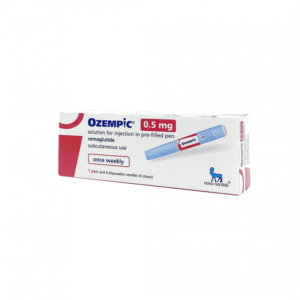Ozempic Belarus
Navigating Diabetes Management with Ozempic in Belarus: A Comprehensive Guide
In Belarus, diabetes is a prevalent health concern, affecting a significant portion of the population. Among the various treatment options available, Ozempic has emerged as a promising solution for managing diabetes effectively. This article aims to provide a comprehensive understanding of Ozempic, its mechanism of action, benefits, availability, and usage guidelines within the context of Belarus.
Understanding Diabetes in Belarus
Diabetes mellitus poses a substantial health burden in Belarus, with both type 1 and type 2 diabetes affecting a considerable number of individuals. According to recent statistics, diabetes prevalence in Belarus has been steadily increasing, necessitating effective management strategies to mitigate its impact on public health.
Introduction to Ozempic
Ozempic (semaglutide) is a once-weekly injectable medication that belongs to the class of glucagon-like peptide-1 receptor agonists (GLP-1 RAs). It works by mimicking the action of the natural hormone GLP-1, which regulates blood sugar levels by stimulating insulin secretion and suppressing glucagon release from the pancreas.
Mechanism of Action
Upon administration, Ozempic binds to GLP-1 receptors in the pancreas, enhancing glucose-dependent insulin secretion while simultaneously inhibiting glucagon secretion. This dual action helps to lower blood sugar levels in individuals with diabetes, leading to improved glycemic control over time.
Benefits of Ozempic
- Improved Glycemic Control: Clinical trials have demonstrated that Ozempic effectively reduces hemoglobin A1c (HbA1c) levels, indicating improved long-term glycemic control in patients with type 2 diabetes.
- Weight Loss: Unlike some other diabetes medications that may cause weight gain, Ozempic has been associated with weight loss in patients, making it particularly beneficial for those who are overweight or obese.
- Cardiovascular Benefits: Recent studies have shown that Ozempic may offer cardiovascular benefits by reducing the risk of major adverse cardiovascular events in patients with type 2 diabetes and established cardiovascular disease.
- Convenience: Being a once-weekly injectable medication, Ozempic offers convenience and improved adherence compared to medications that require daily administration.
Availability and Regulation in Belarus
Ozempic is approved by the regulatory authorities in Belarus for the treatment of type 2 diabetes. It is available in various strengths, typically supplied in pre-filled pens for ease of administration.
Usage Guidelines
- Dosage: The recommended starting dose of Ozempic is typically 0.25 mg once weekly, which can be increased to 0.5 mg and eventually to 1 mg based on individual response and tolerability.
- Administration: Ozempic is administered via subcutaneous injection into the abdomen, thigh, or upper arm. Patients can self-administer the medication after receiving proper training from healthcare providers.
- Monitoring: Regular monitoring of blood sugar levels, HbA1c, and other relevant parameters is essential to assess the effectiveness of treatment and make any necessary adjustments.
- Adverse Effects: While generally well-tolerated, common side effects of Ozempic may include nausea, vomiting, diarrhea, and injection site reactions. Patients should be educated about these potential adverse effects and instructed on how to manage them.
Conclusion
Ozempic represents a valuable addition to the armamentarium of diabetes management strategies in Belarus. With its efficacy in improving glycemic control, promoting weight loss, and potentially reducing cardiovascular risk, Ozempic offers hope for better outcomes for individuals living with type 2 diabetes. By adhering to usage guidelines and working closely with healthcare providers, patients can effectively incorporate Ozempic into their diabetes management regimen, leading to improved quality of life and reduced long-term complications.
Showing the single result




